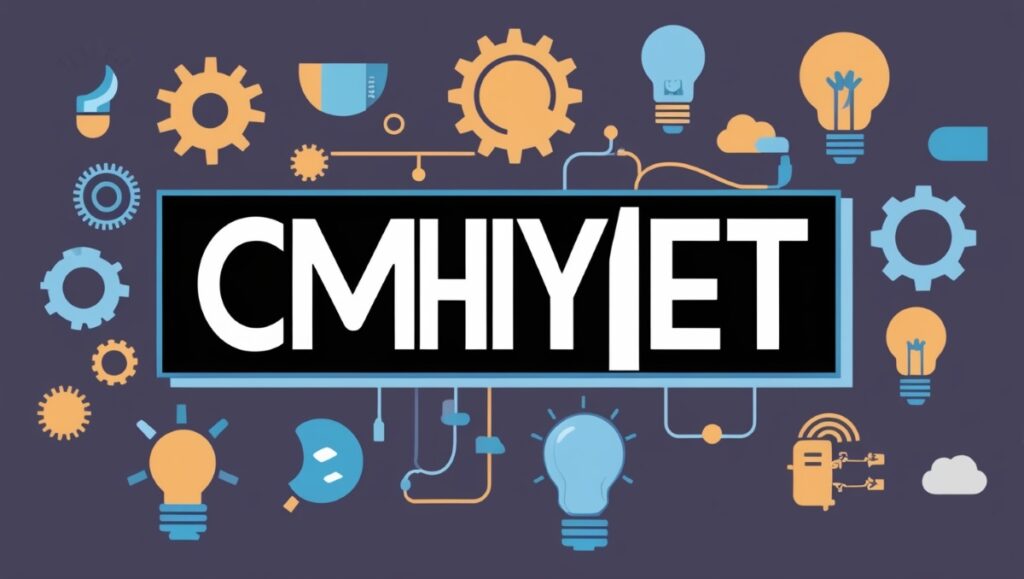Cmhiyet—what a fascinating term that has captured the imagination of scholars, practitioners, and curious minds alike. But what does it really mean? As we dive into this multifaceted concept, you’ll uncover its rich history, diverse theories, and practical applications across various fields. Whether you’re new to cmhiyet or looking to deepen your understanding, this exploration promises insights that could change how you perceive both personal growth and professional development. Buckle up as we unpack the layers of cmhiyet together!
Understanding the Concept of Cmhiyet
Cmhiyet is a complex and dynamic concept rooted in human experience. It encompasses various aspects of identity, culture, and community. At its core, cmhiyet represents the connection individuals have with their surroundings and each other.
This idea transcends mere definitions; it invites exploration into how people navigate their lives in relation to societal norms and values. Cmhiyet reflects our shared experiences while also honoring individual uniqueness.
Understanding cmhiyet involves examining the interplay between personal beliefs and collective influences. It’s about recognizing that everyone carries a narrative shaped by history, geography, and social interactions.
Through this lens, we can appreciate the layers that inform our identities—how they evolve over time as we engage with different environments or groups. Embracing it allows for deeper connections within communities while fostering empathy across diverse perspectives.
The History and Evolution of Cmhiyet
Cmhiyet has a fascinating history that dates back centuries. Initially rooted in cultural practices, it began as a way for communities to express their identity and values.
As societies evolved, so did the concept. The transition from local traditions to broader interpretations marked its significance in various philosophical debates. Scholars started to explore cmhiyet’s implications on social cohesion and individual behavior.
The industrial revolution brought about dramatic changes. Rapid urbanization led people to reflect on their identities amidst growing anonymity, prompting new discussions around it.
In recent decades, globalization has pushed the idea further into contemporary discourse. Today, it encompasses not just cultural heritage but also modern challenges like technology’s impact on our sense of belonging and community involvement.
This dynamic evolution reflects how deeply intertwined it is with human experience across different eras and contexts.
Key Theories and Principles of Cmhiyet
Cmhiyet encompasses several key theories that shape its understanding and application. At the core is the principle of interconnectedness, which emphasizes how individuals relate to one another within a broader societal framework. This idea fosters community engagement and collaboration.
Another important theory is that of adaptability. Cmhiyet encourages flexibility in thought and action, allowing individuals to respond effectively to changing circumstances. This dynamism is crucial for personal growth and societal progress.
The concept of inclusivity also plays a significant role. By promoting diverse perspectives, it aims for holistic solutions that benefit everyone involved.
Sustainability underpins many it practices. It stresses the importance of long-term thinking in decision-making processes, ensuring that actions today do not compromise future generations’ needs.
These principles collectively contribute to creating environments where individuals can thrive together while respecting their differences.
Applications of Cmhiyet in Different Fields
Cmhiyet finds its way into various sectors, each adapting its principles to unique challenges. In education, it fosters collaborative learning environments. Students benefit from peer interactions that enhance understanding and retention.
In healthcare, cmhiyet encourages holistic approaches to patient well-being. It emphasizes community support systems, integrating mental health with physical care for better outcomes.
The corporate world also sees applications of cmhiyet through team-building exercises. These initiatives promote trust and communication among employees, leading to a more productive workplace culture.
Moreover, in urban planning, cmhiyet guides the creation of inclusive spaces. By prioritizing community needs, cities become more livable and connected.
Even in technology development, cmhiyet plays a role by promoting user-centered design principles. This focus leads to innovations that genuinely respond to users’ needs rather than just technological advancement for its own sake.
Criticisms and Controversies Surrounding It
Cmhiyet, despite its growing influence, has not been free from criticism. Some scholars argue that it lacks a clear definition. This ambiguity can lead to misinterpretations in research and application.
Additionally, there are concerns about the practical implications of it principles. Critics suggest that while theories sound appealing on paper, they often fall short when applied in real-world scenarios. This disconnect raises questions about their effectiveness.
Moreover, some practitioners claim cmhiyet promotes a one-size-fits-all approach. Such generalizations may overlook individual differences and cultural contexts crucial for successful outcomes.
Ethical dilemmas arise regarding transparency and accountability within cmhiyet frameworks. Questions linger about who benefits most from these applications—individuals or institutions—and whether this balance is truly equitable.
Real-Life Examples of Successful Implementation of it
One striking example of cmhiyet in action can be seen in community health initiatives. Organizations like Partners In Health have successfully employed cmhiyet principles to deliver healthcare access to underserved populations. By focusing on local engagement, they empower communities to take charge of their health.
Another notable instance is the application of cmhiyet in education. Schools across various regions are adopting collaborative learning environments that embody these concepts. Students work together on projects, fostering a sense of ownership and responsibility.
In the corporate world, companies such as Patagonia have embraced cmhiyet by integrating sustainability into their business model. Their commitment to environmental preservation resonates with both employees and consumers alike.
These examples illustrate how applying cmhiyet can lead to transformative results across diverse sectors, enhancing community involvement and driving positive change.
How to Incorporate Cmhiyet into Your Personal and Professional Life
Incorporating cmhiyet into your daily routine can transform both personal and professional realms. Start by setting clear goals that align with the principles of cmhiyet. This clarity helps guide your actions and decisions.
Next, practice mindfulness. Being present allows you to appreciate experiences more fully and enhances decision-making abilities. Take moments throughout the day to reflect on your values and choices.
Collaboration is another key aspect. Engage with others who share similar beliefs about cmhiyet, fostering a supportive community that encourages growth.
Additionally, seek out opportunities for continuous learning. Workshops or online courses focused on cmhiyet can provide valuable insights that enrich your understanding.
Integrate self-assessment regularly. Evaluate how well you embody these concepts in various aspects of life, adjusting as necessary for ongoing improvement.
Conclusion:
Cmhiyet offers a rich tapestry of concepts and theories that resonate across various fields. From its historical roots to modern applications, understanding it reveals the complexities of how individuals and societies interact. The principles driving this concept serve as powerful tools for addressing contemporary challenges.
As we explore the criticisms surrounding it, it’s essential to recognize that no theory is without its detractors. Engaging with these critiques opens up avenues for deeper understanding and improvement.
Real-life applications illustrate the tangible benefits of incorporating cmhiyet into both personal and professional contexts. Examples abound in areas like education, healthcare, and organizational management where it has led to innovative solutions.
For anyone looking to enrich their life or work environment, integrating aspects of it can lead to profound change. Embracing this framework encourages growth, fosters collaboration, and enhances overall effectiveness.
The journey through cmhiyet is compelling. It invites us all to rethink our approaches in an increasingly complex world. By harnessing its insights, we have the potential not only to enhance our own lives but also contribute positively to society at large.



